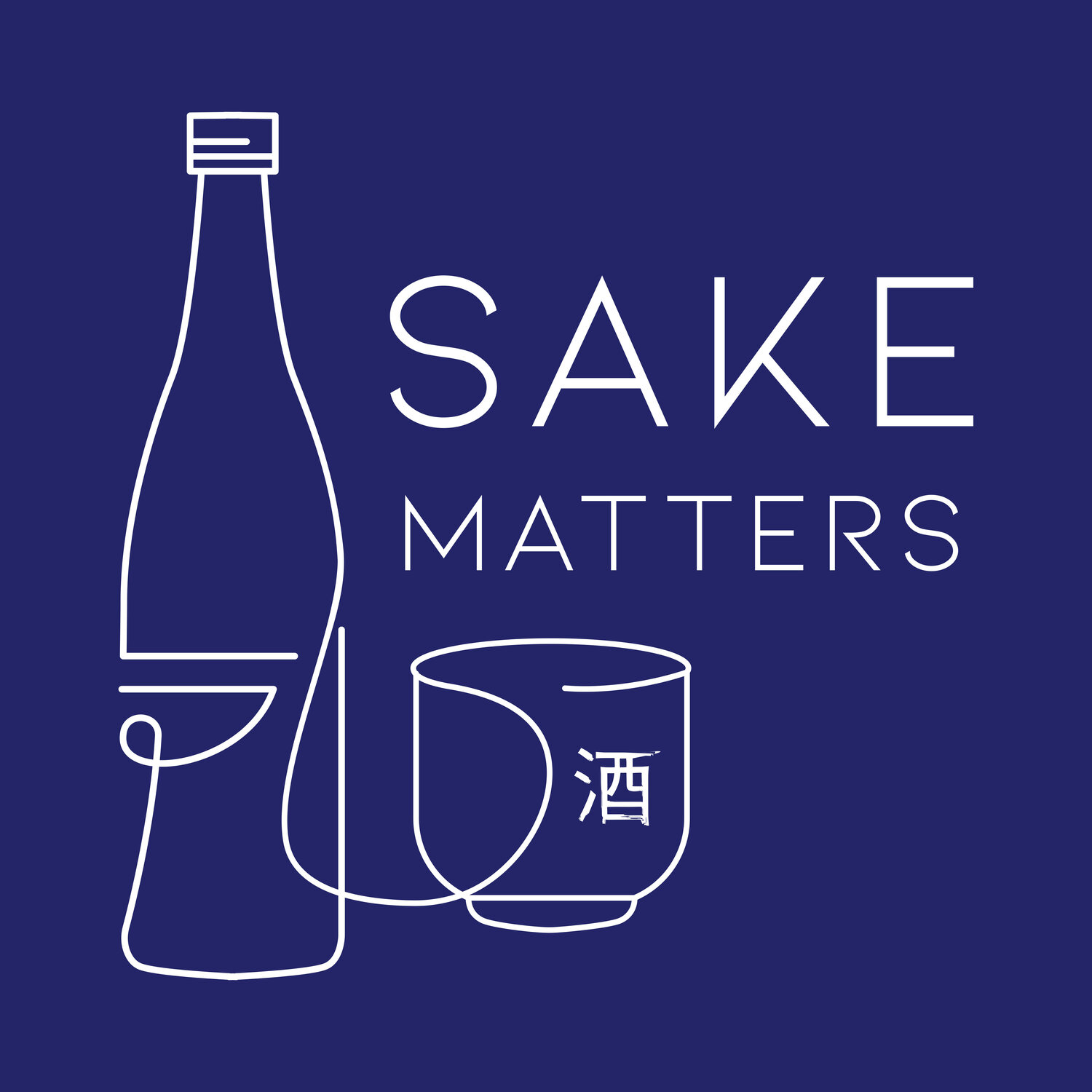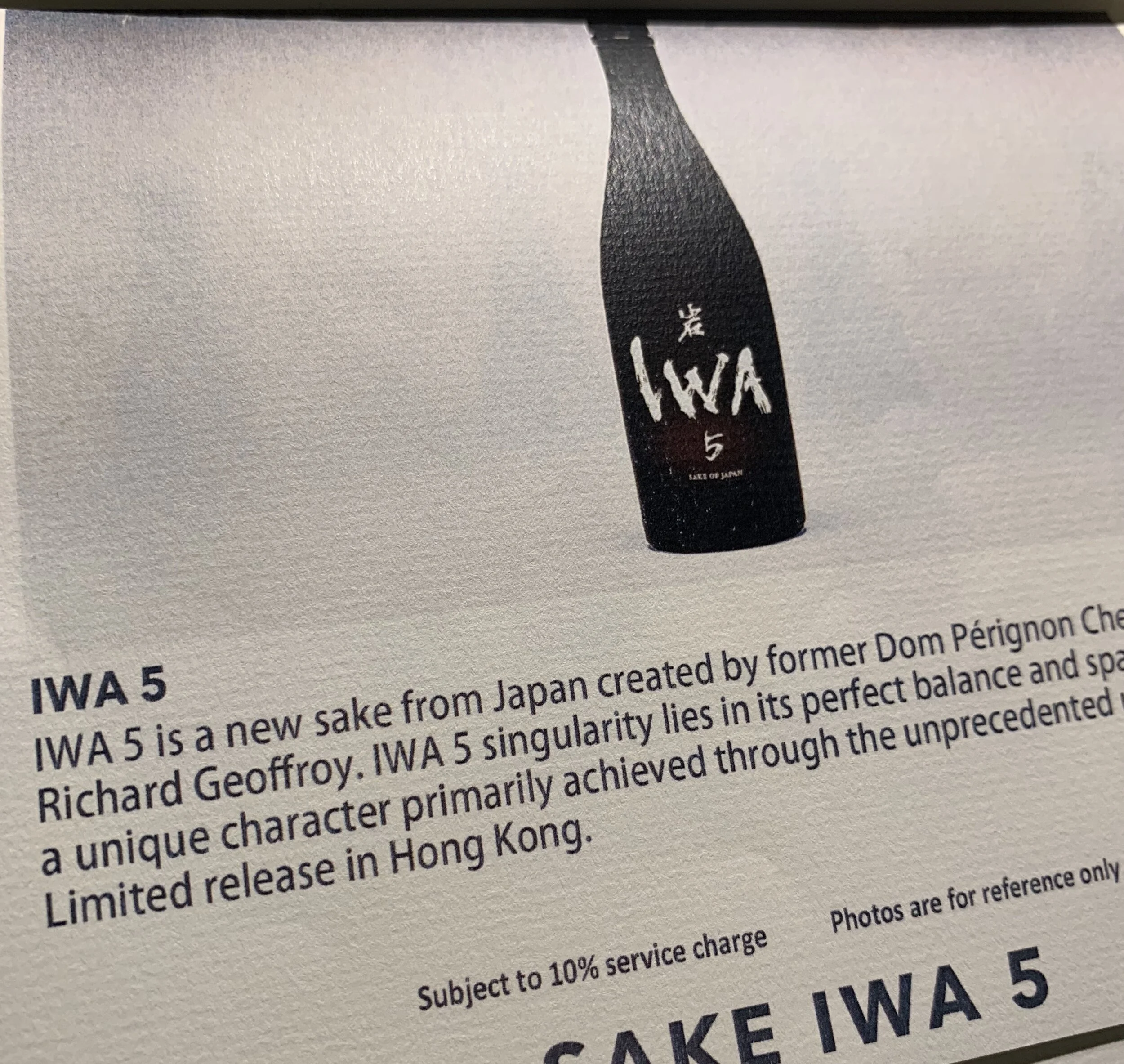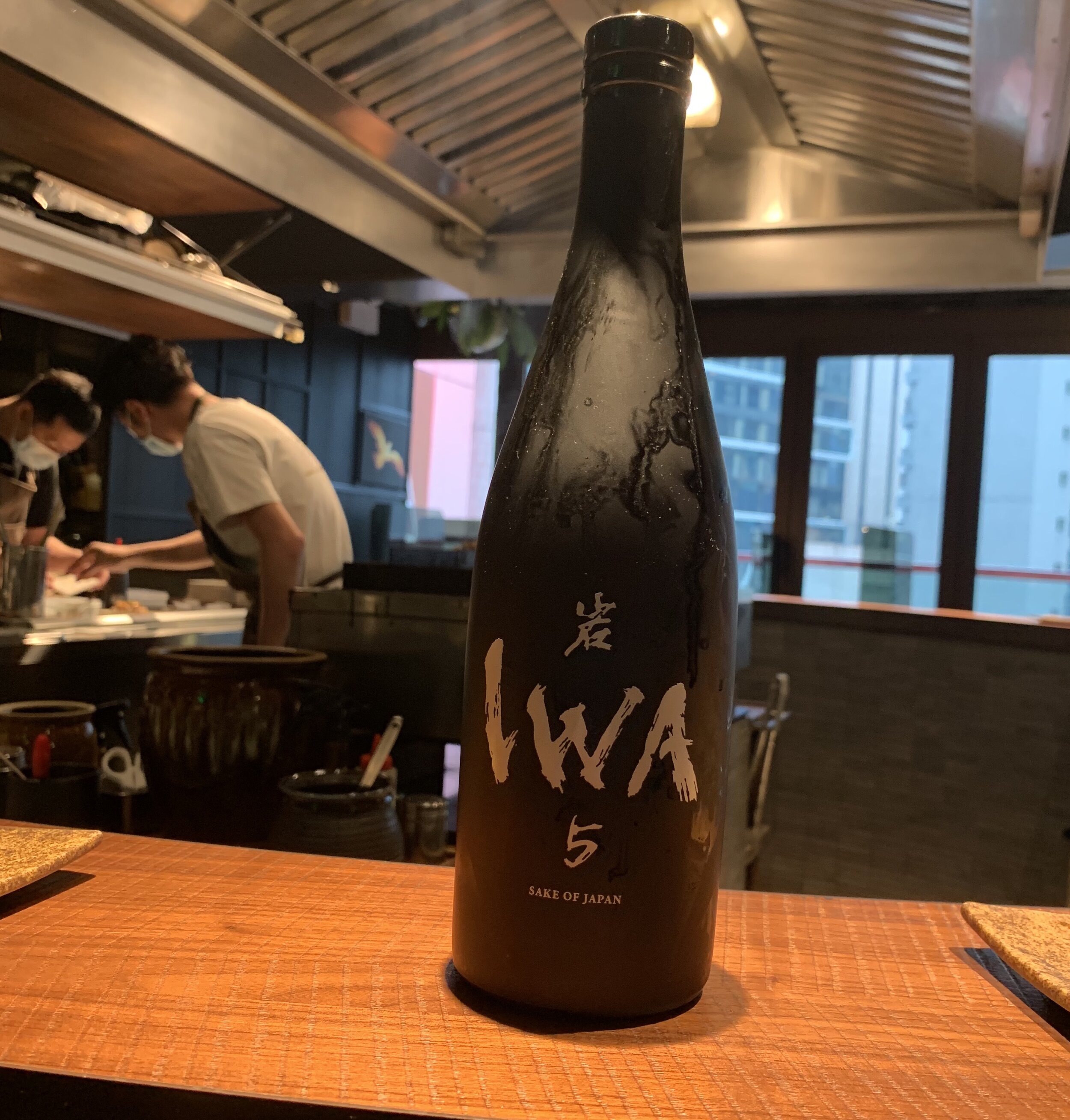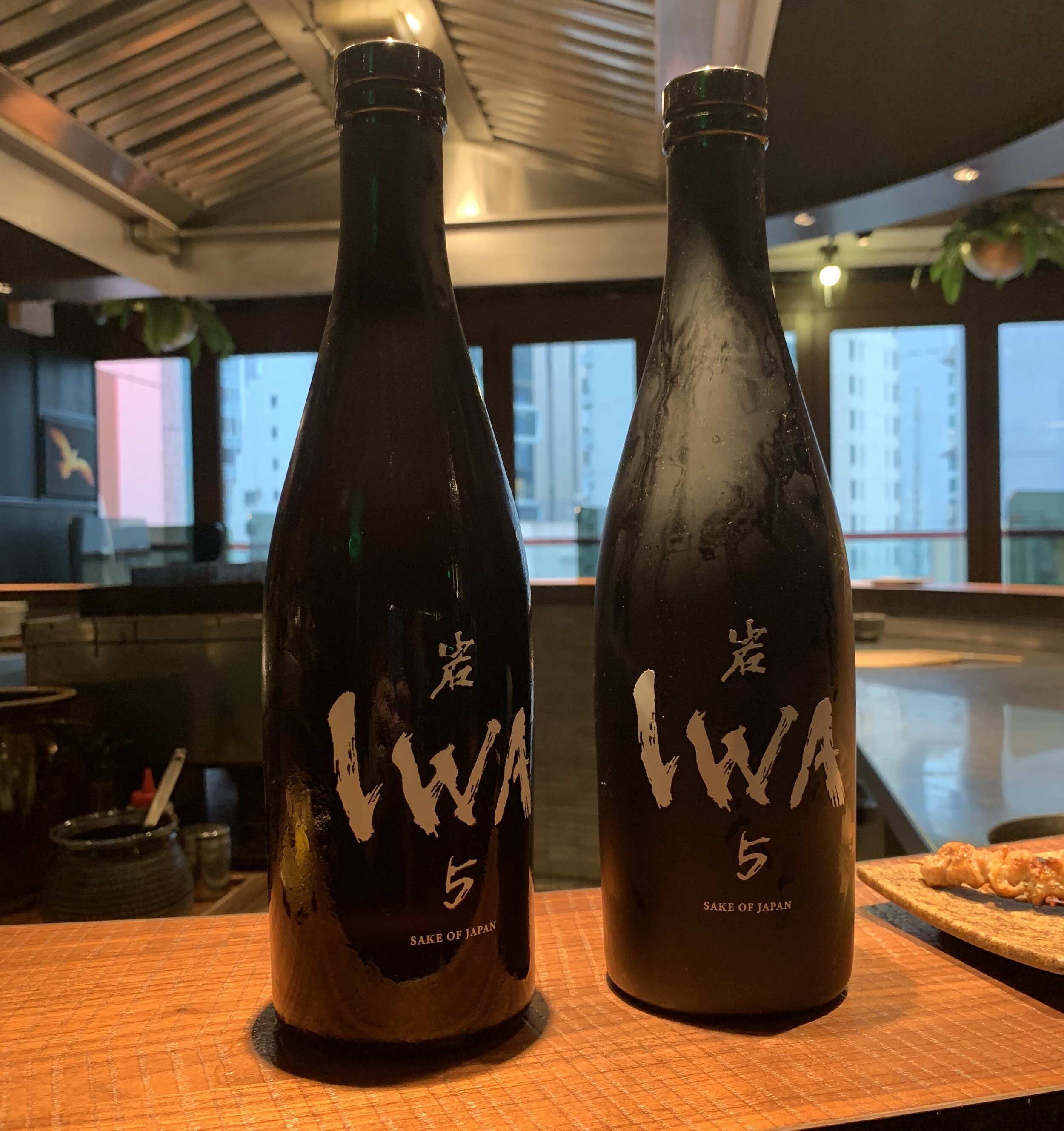IMA IWA
First of all, Kung Hei Fat Choy. The Year of the Ox is here. Got to say the Rat didn’t do much to break any vermin stereotypes last year.
Despite having some R&R opportunities over the New Year holidays, it’s been a busy period but I found time to say goodbye (good riddance) to the Year of the Rat with a Sake that left me a little shocked. In a good way.
As you might have guessed from the title - not one of my best, a bit of silly wordplay as ima 今 means now in Japanese - I got to try some IWA 5. And just to be sure I tried it thoroughly, my host generously insisted we lunch our way through two bottles.
IWA 5 is of course Founder-Maker Richard Geoffroy’s first release, and his first ever Sake. There aren’t that many bottles left out there and so thankfully the next release, or to give it a wine parallel his deuxième assemblage, is under production.
Very quickly for those who have missed all the hype, Geoffroy was born in Champagne and became the fifth Chef de Cave for Dom Perignon, a role he lived and breathed for 28 years. Thirty years of sojourns in Japan cemented his love for the nation and its people, and the idea to help produce a blended Sake came to fruition, a Sake that should embrace the long history of the industry’s methods whilst absorbing the skills and alchemy of his time at Dom Perignon.
I don’t want to expend too many pixels retelling the story so by way of a quick snapshot, just look at this thing. It’s the little Chanel black dress in terms of design. Simple, unique, classic yet different. You’d think I would know better having spent the 00s and 10s with agency folks sat around on beanbags scheming to reinvent packaging that would lure more consumers to purchase. But this is bottle art.
Drinkable art
The writing is laser etched out of the glass, on the front and within the punt. The bottle’s shape has a hint of the bottom heavy Dom Perignon vessel, as does the choice of the dark glass colour. It looks expensive, it is expensive, but I’m doubting many are getting chucked into the recycling bin. Marc Newson, IWA 5 bottle designer, nice job.
Shiraiwa (white rock) is the name of the brewery, or will be. It’s still under construction, slowly slotting in unobtrusively into the magical landscapes of its Toyama Prefecture home, under the watchful gaze and instruction of Kengo Kuma and Ryuichiro Masuda.
I won’t try and explain the recipe for IWA 5. I’m not privy to it anyway but like many of you already know it is a combination of three of Japan’s greatest Sake rices - Yamada Nishiki, Gohyakumangoku, Omachi - along with five yeast strains, including a wine yeast.
This combination has further added complexity and allows blending opportunities to abound. The rices are aged to varying degrees and polished to a variety of Seimaibuai. Yeast and Koji-kin propagations are finessed depending on the rice age, varietal and polishing level. I was told a story about how the Sake needed more “greenness”, and Geoffroy found a way to make it more verdant.
There’s no clues, stats or data on the bottle. In fact on the face of it, in the absence of a polishing percentage and Tokutei-meisho-shu classification, it is essentially a regular Futsu-shu Sake. Although there’s nothing regular about it. It’s a great example of a “less is more” approach.
So now to the shock I mentioned at the beginning. As any Sake enthusiast would be, I was very intrigued to try it, naturally. It felt like a right of Sake passage overdue from 2020, and I’m late to the party again.
But I also felt like I would dislike it, that I almost wanted to dislike it, in just the same way I recoil away from glitzy Champagne buckets stuffed full of mirrored bottles I see at so many Insta-parties. Likewise I don’t need my Miyazaki beef covered in foie gras and caviar (but do send them my way as separate dishes, thanks). Hopefully you can see my viewpoint?
However, IWA 5 does live up to the billing, it really does. Exceeds it actually. Two things really stood out for me. The first is simple. It’s the smoothness and I really can’t see how to noticeably increase smoothness within a filtered liquid, but it slides down so silkily.
Fanning the flames
The second is how accessible the Sake is as a food pairing. I had in my mind that this would be something to be sniffed and sipped with only the highest, and priciest, grades of sashimi. Sure, it would work with some top drawer uni (again, not on my steak thanks), but the fact it matched up to everything that we ordered, is impressive.
Let me spell that out to you: Shungiku & Mizuna Salad (we’re talking spicy, peppery, bittersweet); Potato Salad & Onsen Egg (creamy, fatty, rich); Liver Pâté (even more fatty rich and now savoury too). And as this was a Yakitori joint, a handful of great grilled items including Tsukune (sweet glazed chicken meatball) and Chicken Thigh. The smoky caramelised bits of the chicken didn’t overpower, nor the sticky sweet tare glaze.
IWA 5 met all the demands of this feast, we tried damn hard between us to find something to kill the Sake and failed. My initial notes talk of green bell pepper, lime and grapefruit, flavours that would, and did, work particularly well with the fattier dishes, cutting through them and freshening up the palate. There is a healthy acidity in the Sake, a relic of its Geoffroy wine heritage I’m sure, and alongside it brings in a decent amount of umami.
The Sake opens out like a wine, like many other top Sakes I’ve found, and that kept things interesting. By the time bottle one was almost done, just to complete the experiment, out came a couple of Chicken Liver skewers and our IWA 5 last pours warmed to 35°C in a Tokkuri.
Let’s remember here that we’re now warming what is, in all likelihood, a blend of mostly Daiginjo grade Sakes. That ain’t common practice but the increased acidity and umami worked in balance and my earlier aromas got slapped into touch, replaced by something more mineral and iron-like, a great match for the blood rich offal.
IWA 5 could keep up, and I found that really cool.
This Sake that I had mentally dismissed as likely to be too ethereal, light and insubstantial took control of all the food groups we could throw at it. All in all, a great lunch then and healthy too, arguably (I had some salad, right). A lovely way to say bye to the Rat and a reminder that well made Sake can simply be just so good.
So I park IWA 5 in my celebration drinks category. It’s not for everyday quaffing, that wouldn’t be right. But trouble is, it sits there beside Dom Perignon, what to choose for the next anniversary? Now there’s a first world problem if I ever saw one.
FOOTNOTE:
The first release of IWA 5 has only been distributed in Japan, Hong Kong, Singapore and Taiwan, lucky me. The second release is due in April with a broader export plan.
LINKS:
IWA 5
https://iwa-sake.jp
@iwa.sake
info@iwa-sake.jp
QUICK GLOSSARY:
Seimaibuai: The percentage of rice remaining after the polishing process compared to its original weight (so a 60% seimaibuai reflects that 40% has been polished away)
Koji: Rice that has been inoculated with Koji-kin mold
Tokutei-meisho-shu: Special designation Sakes, variously categorized but all meeting various stringent guidelines
Futsu-shu: Every day “table Sake”, but still delicious and accounting for by far the lion’s share of Sake drunk domestically in Japan
Tokkuri: A carafe for serving hot or cold Sake. Traditionally made from ceramic or earthenware, it can be partially submerged into a hot water bath to gently warm the Sake. Designed to hold one “go” or ichigo (180ml) of Sake
Daiginjo: Sake made from rice at a polishing ratio below 50%












